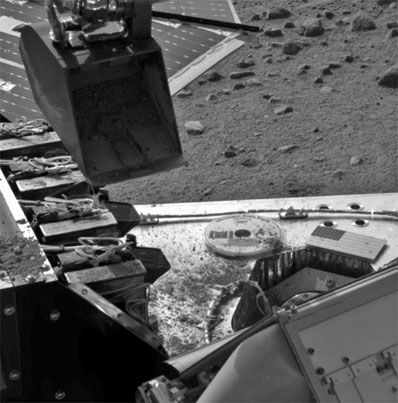


Spaceflight Now +

|

|

|

|

Subscribe to Spaceflight Now Plus for access to our extensive video collections!
 How do I sign up? How do I sign up?
 Video archive Video archive

Jason 2 launch

A ULA Delta 2 rocket launched the Jason 2 oceanography satellite from Vandenberg Air Force Base on June 20.

 Full Coverage Full Coverage

Jason 2 preview

The joint American and European satellite project called Jason 2 will monitor global seal levels.

 Mission | Science Mission | Science

STS-124 space shuttle mission coverage

Extensive video collection covering shuttle Discovery's mission to deliver the Japanese Kibo science lab to the station is available in the archives.

 Full Coverage Full Coverage

Phoenix landing preview

Less than two weeks before the Phoenix spacecraft arrives at Mars, this previews the landing and the planned science on the planet's surface.

 Presentation | Q&A Presentation | Q&A

STS-82: In review

The second servicing of the Hubble Space Telescope was accomplished in Feb. 1997 when the shuttle astronauts replaced a pair of instruments and other internal equipment on the observatory.

 Play Play

STS-81: In review

The fifth shuttle docking mission to the space station Mir launched astronaut Jerry Linenger to begin his long-duration stay on the complex and brought John Blaha back to Earth.

 Play Play

Discovery rolls out

Discovery travels from the Vehicle Assembly Building to pad 39A in preparation for the STS-124 mission.

 Play Play

STS-124: The programs

In advance of shuttle Discovery's STS-124 mission to the station, managers from both programs discuss the flight.

 Play Play

STS-124: The mission

A detailed preview of Discovery's mission to deliver Japan's science laboratory Kibo to the station is provided in this briefing.

 Part 1 | Part 2 Part 1 | Part 2

STS-124: Spacewalks

Three spacewalks are planned during Discovery's STS-124 assembly mission to the station.

 Play Play

STS-124: The Crew

The Discovery astronauts, led by commander Mark Kelly, meet the press in the traditional pre-flight news conference.

 Play Play

Discovery to VAB

For its STS-124 mission, shuttle Discovery was transferred from its hangar to the Vehicle Assembly Building for attachment to a fuel tank and twin solid rocket boosters.

 Transfer | Hoist Transfer | Hoist

Complex 40 toppling

The Complex 40 mobile service tower at Cape Canaveral's former Titan rocket launch pad was toppled using explosives on April 27.

 Play Play

 Become a subscriber Become a subscriber
 More video More video

|

|

|

|
|

|

Phoenix Mars lander puts soil in chemistry lab
UNIVERSITY OF ARIZONA NEWS RELEASE
Posted: June 25, 2008
TUCSON, Ariz. -- NASA's Phoenix Mars Lander placed a sample of Martian soil in the spacecraft's wet chemistry laboratory today for the first time. Results from that instrument, part of Phoenix's Microscopy, Electrochemistry and Conductivity Analyzer, are expected to provide the first measurement of the acidity or alkalinity of the planet's soil.
The analysis of this and other soil samples will help researchers
determine whether ice beneath the soil ever has melted, and whether
the soil has other qualities favorable for life.

This picture taken by the Surface Stereo Imager on Phoenix shows the lander's arm scoop positioned over the Wet Chemistry Lab delivery funnel. Credit: NASA/JPL-Caltech/University of Arizona/Texas A&M University
|
The Phoenix team is discussing what sample to deliver next to the
lander's other analytical instrument, which bakes and sniffs soil to
identify volatile ingredients. Engineers have identified possible
problems in the mechanical and electrical operation of that
instrument, the Thermal and Evolved-Gas Analyzer, or TEGA.
Scientists are studying information provided by TEGA's analysis of the
first Martian soil sample put in that instrument. The instrument has
eight single-use oven cells; each cell can analyze one sample. When
doors for a second TEGA oven were commanded open last week, the doors
opened only partway. Later, the team determined that mechanical
interference may prevent doors on that oven and three others from
opening fully. The remaining three ovens are expected to have one
door that opens fully and one that opens partially, as was the case
with the first oven used.
"The tests we have done in our test facility during the past few days
show the robotic arm can deliver the simulated Martian soil through
the opening with the doors in this configuration," said William
Boynton of the University of Arizona, Tucson, lead scientist for
TEGA. "We plan to save the cells where doors can open wider for
accepting ice samples."
Scientists believe the first soil sample delivered to TEGA was so
clumpy that soil particles clogged a screen over the opening. Four
days of vibration eventually succeeded at getting the soil through
the screen. However, engineers believe the use of a motor to create
the vibration may also have caused a short circuit in wiring near
that oven. Concern about triggering other short circuits has prompted
the Phoenix team to be cautious about the use of other TEGA cells.
Subsequent soil samples for TEGA will be delivered with a different
method than the first. The newer method will sprinkle soil into the
instrument to make it easier for particles to get through the
screens.
The Phoenix mission is led by Peter Smith at the University of Arizona
with project management at NASA's Jet Propulsion Laboratory in
Pasadena, Calif., and the development partnership at Lockheed Martin
in Denver. International contributions are from the Canadian Space
Agency; the University of Neuchatel, Switzerland; the universities of
Copenhagen and Aarhus, Denmark; Max Planck Institute, Germany; and
the Finnish Meteorological Institute.
|

|

|

|




|




